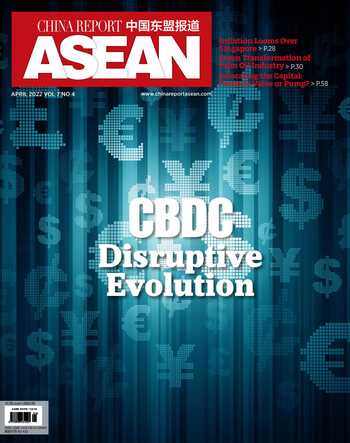NEW PROSPECTS FOR HAINAN-ASEANCOLLABORATION
Ong Tee Keat
Ever since China made its commitment toachieving carbonneutrality before2060, its thrivinggreen economy,characterized bythe prevalenceof carbon credittransactions and the emergence ofnew renewable energy technologies, has no doubt provided a modelto emulate for Southeast Asiandeveloping economies also inpursuit of sustainable development. On the other hand, the vast areas oftropical rainforests in the region,as an important carbon sink in thefight against climate change, havemade an ideal resource for carboncredit trading. From this perspective, Hainan, China’s southernmostisland province known for itsproximity to Southeast Asia, is theideally positioned bet for pioneering the green economy collaborationbetween China and the Associationof Southeast Asian Nations (ASEAN).
Maritime tourism, aquaculture,fishery and sea-borne logistics areother sectors in which China canoffer its expertise and experienceto its Southeast Asian neighborsthrough Hainan. The vision ofcollaboration should not be capped at mere trading of marine produceor the dispatch of tourists as waspracticed in the past. Instead,provision of infrastructure formaritime tourism, aquaculture and fishery through Chinese assistance will go a long way to help developthese sectors in ASEAN members.
Hainan’s southward outreach could not have come at a moreopportune time, given that theprovince is poised to become anisland-wide free trade port by 2025,and the China-ASEAN relationshipwas lifted to a comprehensivestrategic partnership in 2021. Theelevation extends beyond economiccollaboration. It provides an idealplatform for both sides to forge acommunity with a shared future.This will greatly befit ASEAN, whichenvisions the inception of the ASEAN Community by 2025.
From the perspective of tradein goods and services, Hainan’supcoming free trade port status willfurther enhance its competitivenessas the province will take on animportant role in the national dualcirculation development strategythat features domestic and overseasmarkets reinforcing each other withthe domestic market as the mainstay. It can fully leverage its tariff-freestatus to attract goods and servicesfrom Southeast Asia, notably tropical agricultural produce that couldbe further processed for marketdistribution throughout China.
In retrospect, the Hainan-ASEANtrade volume of US$3.43 billiononly constituted 0.5 percent oftotal imports and exports betweenChina and the Southeast Asian blocin 2020. If Hainan’s full potentialas a logistics hub is unleashed,alongside the coming to fruition ofother initiatives of collaboration,exponential growth of said weightage is not a distant dream. This ispossible given the goal of both thecentral and provincial authorities isto transform Hainan into the world’s most globally influential high-levelfree trade port and the area of Chinamost open to the world. It is expected to soon morph into a hub of multi-connectivity with not only Southeast Asia, but the entire Asia-Pacificregion, including all members of the Regional Comprehensive EconomicPartnership. The deal, consisting of15 regional economies and cominginto force on January 1, creates afree trade zone covering roughly 30percent of the global GDP, trade andpopulation.
Hainan is now all set to becomethe next promising region of China. Its economic interests, to a largeextent, are inextricably intertwined with those of Southeast Asia. Onlythrough leveraging mutual trustrooted in shared interests couldwe ever transform the geopoliticaltension-filled South China Sea into a theater of peace and solidarity,conducive to the symbiotic Hainan- ASEAN collaboration and beyond.The key lies in not the economicgains per se, but in the collectiveawareness of forging a region-wide community with a shared future.

